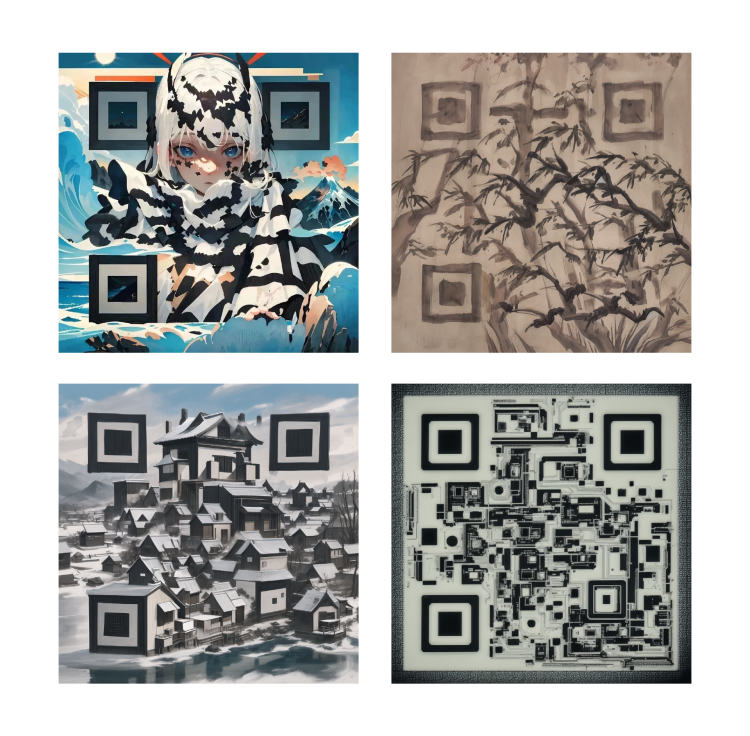In an era where contactless payments and digital interactions are becoming the norm, Quick Response (QR) codes are experiencing a resurgence in popularity, facilitating seamless access to a plethora of information, products, and services. Of late, the advent of AI-powered QR code technology, AIGC, has brought a fresh perspective to the industry by introducing a blend of practicality and aesthetics in QR code generation. This movement is reshaping the way consumers engage with these matrix barcodes, transforming them from merely practical tools into works of art.
The introduction of AIGC to QR code generation can be attributed to a project named ControlNet for QR Codes. This project has gained a significant internet following due to its creative utilization of AI to generate unique, visually appealing QR codes. The introduction article in Chinese has over 31,000 views. The project's success has provided a glimpse into the potential of AI and its capacity to revolutionize even niche industries.

The QR Code was first introduced in 1994 by a Japanese firm. It is essentially a matrix version of the traditional barcode but with more data storage capabilities. This matrix barcode can contain a significant amount of textual information, acting as a bridge between humans and computers. A key benefit of the QR code is its ability to encapsulate information within a pattern, negating the need for consumers to process intermediate information.
In China, QR codes have been widely adopted due to the nature of their technological landscape. Chinese tech giants, such as Taobao and WeChat, have built walls around their ecosystems, preventing the seamless sharing of links across platforms. This, coupled with restrictions on link-sharing on various social media platforms, has led to the widespread use of QR codes as a solution. Additionally, QR codes have become integral to mobile payments, particularly with platforms like Alipay and WeChat Pay, as traditional payment methods like credit cards and NFC are less prevalent in China.
QR codes are designed with unique features that enhance their functionality. They are constructed with three indicator squares that allow for scanning from any angle or perspective. Furthermore, they are designed to be tolerant of defects, ensuring the encapsulated information remains accessible, even if the QR code is damaged. These features not only ensure the practicality of QR codes but also pave the way for artistic innovation.
The ControlNet for QR Code project was spearheaded by a team of Chinese college students and supported by university resources. They made use of ControlNet, a "controller" for pre-trained models with additional parameters, designed by Stanford Ph.D. candidate Lyumin Zhang. This model was trained on 100,000 images using A6000 cards over 13 hours. When combined with other projects such as Checkpoint and LoRA, ControlNet can generate visually stunning QR codes, often incorporating traditional Chinese elements or patterns. Other examples demonstrate QR codes integrated into anime characters' attire and makeup.
The potential for commercialization of projects like ControlNet for QR Code could be promising, particularly in the realms of marketing and advertising. As well as providing a visually appealing method of sharing information, these artistic QR codes can attract users to scan and subsequently be directed to another page, essentially driving traffic and engagement.

This is not the first instance of technology reshaping the marketing and advertising landscape in China. Similar traction was gained by SVG, a technology that has been widely adopted for advertising purposes. SVG enables the creation of interactive content within WeChat articles, bypassing the platform's restrictions on article presentation. Like SVG, the development of AIGC tools including artistic QR codes may revolutionize the way digital content is created and presented, introducing a new era of digital interaction and engagement.
As the field of artificial intelligence (AI) continues to evolve, AI Generated Content (AIGC) tools like OpenAI’s GPT are rapidly gaining traction and drawing the tech industry to the next era. They can generate everything from written content to visual imagery, and even music. Their growing popularity is a testament to their potential to automate tasks, enhance creativity, and add value to various sectors including marketing, design, and entertainment.
Some can even be used to create a whole virtual community in open-world games or imitate an artist's voice to cover music titles in their style.
However, such powerful tools still have their Achilles' heels. One significant drawback is their dependency on the data they are trained on. While this allows the AI to learn and adapt, it also makes the AI susceptible to the biases present in the training data, potentially resulting in skewed or inappropriate output.
Another limitation revolves around copyright. As these tools can generate content that mirrors human creativity, based on open data it raises questions about intellectual property rights and potential violation.
